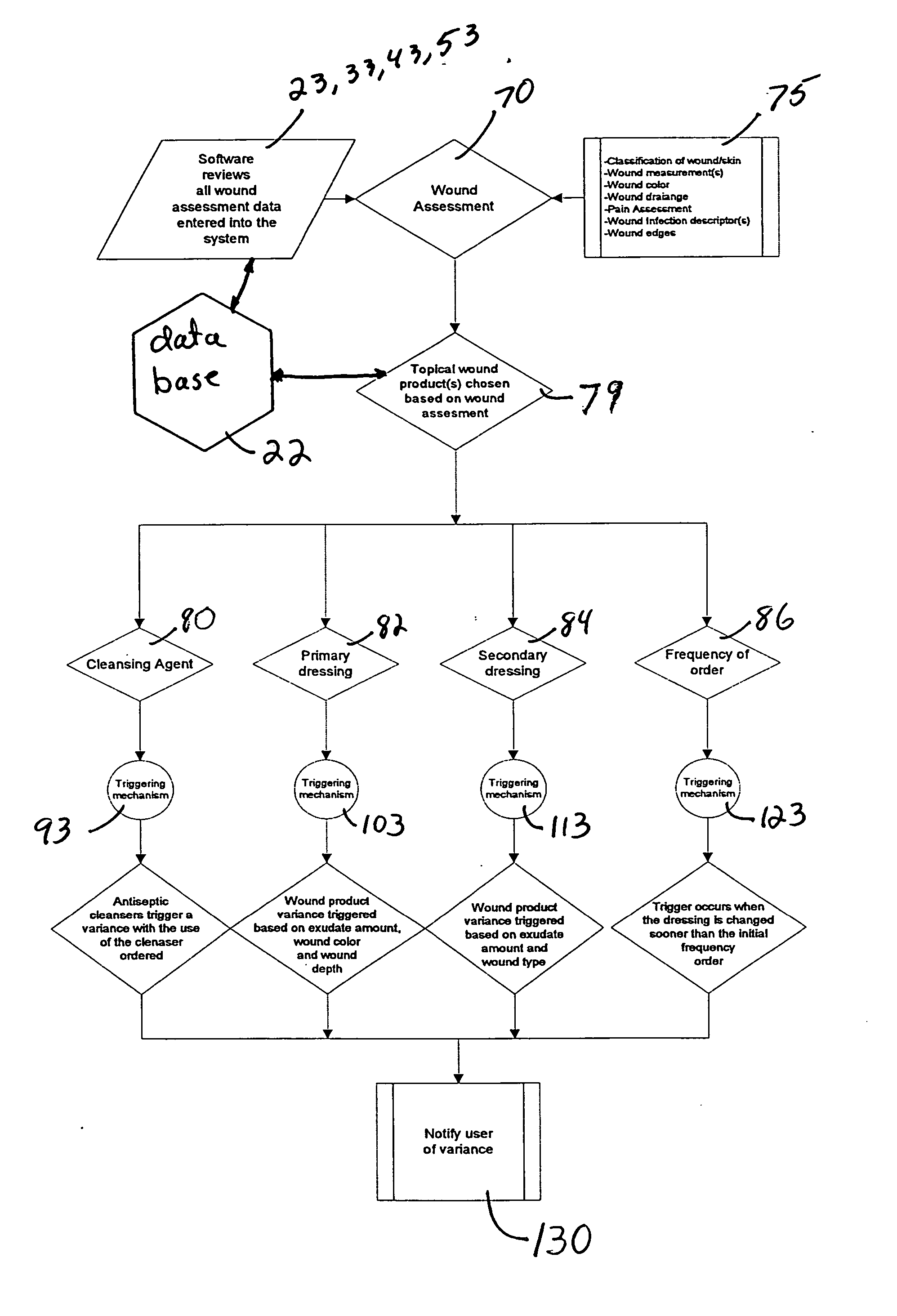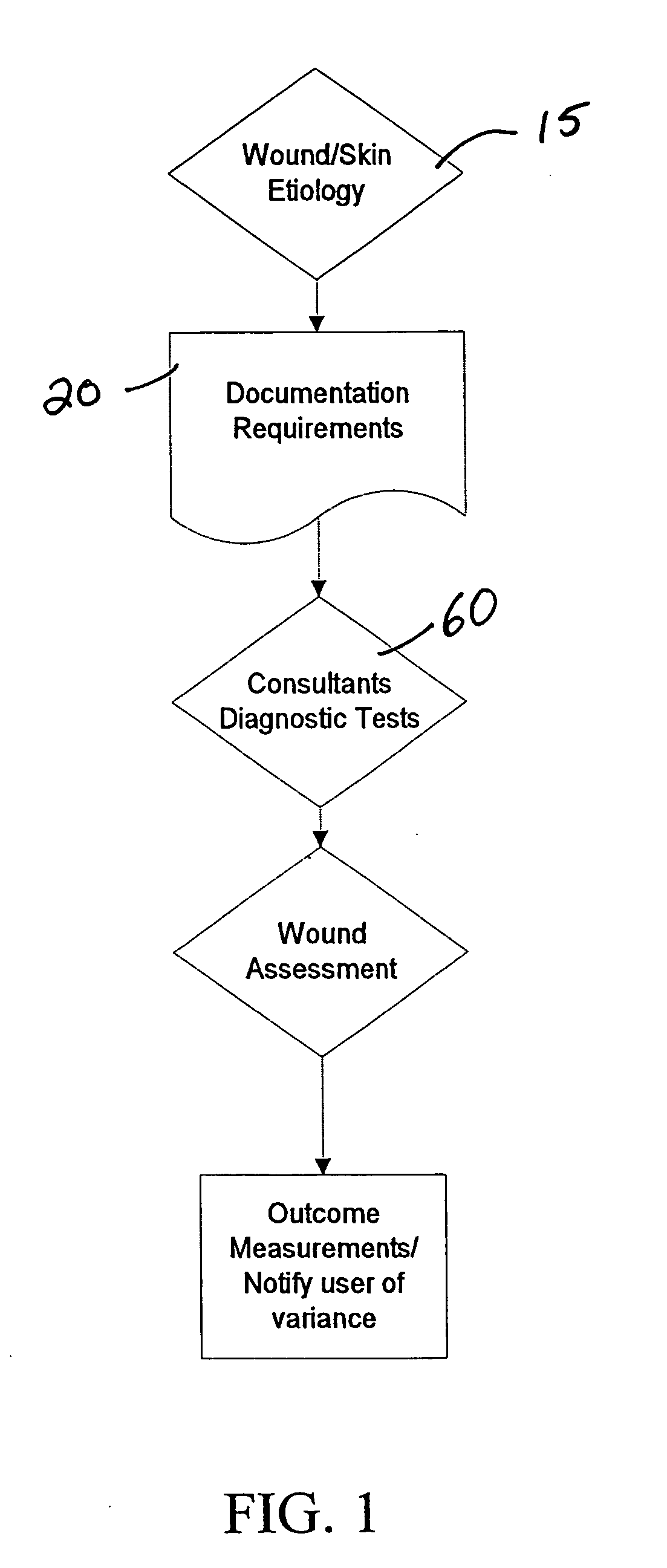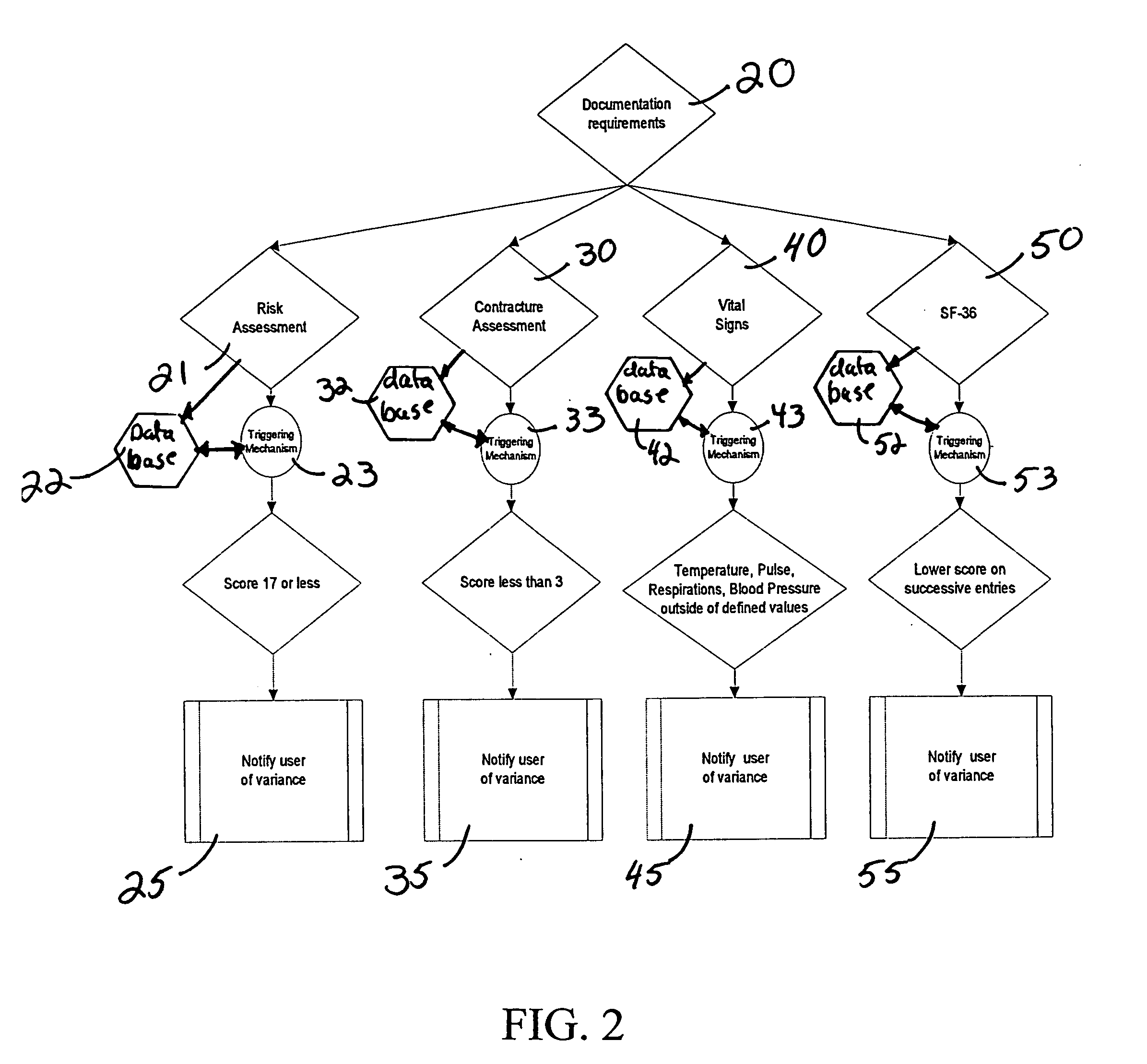Clinical wound manager and method
a wound manager and clinical technology, applied in the field of skin and wound conditions, can solve the problems of increasing the cost of chronic ulcer care, and progressing beyond the initial phases, and in many cases, difficult, and expensiv
- Summary
- Abstract
- Description
- Claims
- Application Information
AI Technical Summary
Benefits of technology
Problems solved by technology
Method used
Image
Examples
Embodiment Construction
[0022] This description of preferred embodiments is intended to be read in connection with the accompanying drawings, which are to be considered part of the entire written description of this invention. The present invention provides a method for assessing and documenting wound and skin conditions, and includes an automatically triggered alerting mechanism that advises a clinical healthcare provider or clinician, when he or she initiates a treatment that deviates or is a variation from an expected or standard treatment under the current circumstances or fails to initiate an expected or standard treatment. The method of the present invention may be practiced manually with the aid of physical documentation aids, e.g., a series of color coded forms or data entry and recording means, or may be implemented as software on a general purpose computer of the type well known in the art, either locally or as a part of a larger computer network, such as the Internet World Wide Web. Although in ...
PUM
 Login to View More
Login to View More Abstract
Description
Claims
Application Information
 Login to View More
Login to View More - R&D
- Intellectual Property
- Life Sciences
- Materials
- Tech Scout
- Unparalleled Data Quality
- Higher Quality Content
- 60% Fewer Hallucinations
Browse by: Latest US Patents, China's latest patents, Technical Efficacy Thesaurus, Application Domain, Technology Topic, Popular Technical Reports.
© 2025 PatSnap. All rights reserved.Legal|Privacy policy|Modern Slavery Act Transparency Statement|Sitemap|About US| Contact US: help@patsnap.com



